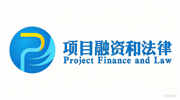The U.S. Can Outcompete China in Africa
China’s latest ecological disaster in Africa underscores how the United States can offer a better deal to African partners. A Chinese-owned mining company spilled toxic acid into several neighborhoods in Lubumbashi, a major mining town with three million people in southern Democratic Republic of the Congo (DRC), in early November. Unfortunately, the accident is emblematic of China’s extractive role in Africa and globally that leads to unmitigated environmental hazards and endangers local communities. US officials and business leaders pursuing President Donald Trump’s “trade not aid” Africa policy should highlight this point when contrasting how US investment is a better alternative to an uneven partnership with China.
A retaining wall that held back mining waste at a site owned by Congo DongFang International Mining (CDM), a subsidiary of Chinese mining giant Zhejiang Huayou Cobalt, collapsed on November 4. The resulting spill spewed toxic chemicals into the waterways around Lubumbashi and reportedly killed thousands of fish. Early assessments by experts indicate that the spill caused “serious environmental damage.” Congo’s mining minister criticized CDM for its negligence and suspended the site’s activity for three months. CDM already had a spotty record of using child labor, and local organizations had warned for years that waterways were slowly being polluted in Lubumbashi before the early November disaster.
China not only shows utter disregard for African civilians with its extractive model—it plunders countries’ mineral riches to the detriment of African economies and governments writ large. Zhejiang Huayou Cobalt is one of the world’s biggest cobalt producers, and CDM is a key player in China’s chokehold over copper and cobalt mining in the southern DRC. In the DRC, China controls at least eight of the 14 largest cobalt mines and over 80 percent of copper production, and such monopoly gives it little incentive to follow safe or fair business practices. China also runs illegal artisanal mines that often use imported Chinese labor, cheating African workers and governments out of the full benefits of their mineral wealth.
China uses its chokeholds over mineral markets to artificially manipulate mineral prices and make it economically infeasible for competitors to enter the market. This exploitative strategy prevents African governments from benefitting from bidding wars between prospective partners in a free and fair market. Possibly even worse, it makes them dependent on China’s whims for mineral export revenue, which can be a vital source of income for many governments. The DRC placed export restrictions on cobalt in early 2025 in an effort to curtail Chinese price fixing.
A reckless concern for safety and scrupulous operating procedures is the pattern for Chinese engagement across the globe, not the exception. Farmers in Zambia are suing two Chinese firms for nearly a nearly identical accident in Zambia, where the collapse of a dam caused an “ecological catastrophe” as acid flooded into a local water supply in February. In Myanmar, where a civil war has raged since 2021, China has relocated its most polluting rare-earth production activities to the Southeast Asian nation from the Chinese countryside. Locals have protested regularly at a Chinese-owned copper mine in Peru that produces two percent of global supply over environmental concerns since 2015.
The United States should emphasize that it can offer a better alternative that protects civilians and benefits both nations, and it has a chance to prove it through the US-backed Regional Economic Integration Framework (REIF) in the DRC and Rwanda. The DRC and Rwanda recently signed the US-brokered REIF on November 7, which could see billions of dollars of US investment to the region in the years ahead. The Congolese government has already explored joint investments by the US government and US companies in 2025, including in mining, infrastructure, and power generation.
China’s extractive business model has repeatedly shown a disregard for African civilians and prevented African governments from getting the most from their natural resource bounty. The growing US involvement in the business and critical mineral sphere will lead to healthier competition that benefits Africans. When it comes to that competition, US business leaders and officials should highlight the detrimental environmental and economic impacts of China’s lopsided partnerships and point to the emerging success stories in REIF in DRC and Lobito corridor in Angola as they make their pitches to prospective African partners.
Liam Karr is the Africa team lead for the Critical Threats Project at the American Enterprise Institute. Yale Ford is an Africa Analyst for the Critical Threats Project at the American Enterprise Institute






